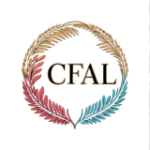Abstract:
This article explores the pivotal step of matching objectives with learning experiences in the course design process, using a mini course on “Packing a Box” as an illustrative example. The presented objectives guide the development of specific learning experiences tailored to achieve each objective effectively.
The learning experiences include a combination of lecture/demonstration, practical application, group discussions, and interactive activities to ensure a comprehensive and engaging educational journey. Through these experiences, participants are actively involved in using a tape gun, creating different box shapes, selecting appropriate box sizes, and applying written standards of packaging.
The article emphasizes the shift from traditional lecture-based teaching to a participant-centered approach, where the instructor becomes the organizer of learning experiences. By actively involving participants in practical tasks and discussions, the article advocates for a more effective and engaging learning process.
The presented learning experiences enable participants not only to acquire knowledge and skills but also to internalize and apply them in real-world scenarios. The article concludes by highlighting the efficiency of this participant-driven approach, emphasizing the importance of participants being able to teach and apply their newfound knowledge, ultimately achieving the desired competency. The article also hints at the broader content covered in the Certified Facilitator of Adult Learning course, offering a holistic approach to course development and facilitation.
Developing Learning Experiences
Learning experiences are now developed to match the level of performance expected in the objectives. We’ll use the Objectives we developed in Level 4 as our example.
Objectives for a mini course on Packing a Box
Learning Experiences
1. Use a tape gun to prepare and seal a box effectively and efficiently.
- Lecture/demonstration of proper use of tape gun
- Small group, pairs or individual participant practices with a tape gun and several different types of boxes to seal. Receives verbal cuing with respect to preferred methods. – 5 minutes
2. When necessary, create a different shape and size of a box that will pass shipping regulations.
- The instructor has prepared different inexpensive or sample items to be shipped and different size shipping boxes.
- Small group, pairs or individual participants try different combinations and modifications of boxes to fit items.
- Instructor facilitates a discussion on the pros and cons of each shape tried. 5 minutes
3. Select appropriate size box for products in the order.
a. Determine the appropriate amount of packing material to avoid product damage if box is dropped
- Demonstration/discussion about available packing materials and when each is used best. (Paper, bubble wrap, tissue paper, boxes within boxes and so on.
- Small group, pairs or individuals now use the same materials provided to pack into the boxes they prepared.
- After items have been packed, organize a game of toss the package, among participants or with you and a participant. The goal is to try to make the other person miss and drop the package. (Use common sense here – light weight packages, no intent to harm or injury.
- Discussion among participants on how they have felt about the company when a package they wanted arrived broken. 10 minutes
4. Apply written standards of packaging set by the business to each box for safety and cost effectiveness.
- Based on what they have experienced, participants write up “rules” for packing boxes.
- Instructor facilitates discussion and allows participants to compare their standards with previously written standards. A final set of standards is approved. 10 minutes
Summary
The learning to ship experience could be done within a half hour, about the same time it would take an instructor to lecture and demonstrate.
However, instead of lecturing/demonstrating to a passive audience, you have become the Organizer of their learning and their time to learn.
By wisely selecting the activities you enable the participant to tell you what you want them to know. When they can “teach it to you”, you know that they have “got it” and use it in the future. And that’s the goal of every Facilitator of Adult Learning.
Embark on a learning adventure with the Certified Facilitator of Adult Learning course – your gateway to crafting top-notch courses while enjoying expert guidance every step of the way. Beyond just setting objectives, this course throws in some cool modules on Adult Learning, Personality Types, Learning Theories, and clever Methods of Learning. Discover the knack of facilitating engaging sessions by asking the right questions, spice things up with pre-post testing tricks, and learn the ropes of evaluating participant competency. It’s not your average course—it’s your key to becoming a savvy and laid-back facilitator. Let’s make learning awesome together! 🌟🎓


